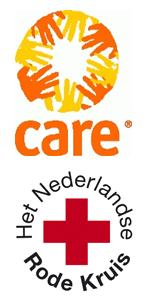Resilient WASH systems in drought-prone areas
Resilient WASH systems need to be able to cope with changes in the availability of water. This section explores what what techniques can be used to improve water availability over space and time in areas not only prone to drought and changing climate variability, but also those areas with deteriorating water availability due to increasing water demands and human influences. This section focuses on water supply and non-motorized irrigation in rural areas for populations of up to 5,000 people. Resilience is a concept used to describe how to make water systems more robust in terms of water availability, thereby reducing the vulnerability of people that rely on them.
Both technical and non-technical components are important in discussing how to make water systems resilient. In many cases, it is not technical issues which cause projects to become unsustainable, but non-technical issues such as management, social relationships and community dynamics. The technical measures can be divided in three types:
- Improving the availability of water over space (more points of water in an area means better access for people and livestock)
- Improving the availability of water over time (more water available to span increasing length of dry seasons, or, relevant to agriculture, short dry spells)
- Improving techniques that influence water demand, such as water-saving technologies and irrigation practices, re-use techniques and drought-resistant crops.

